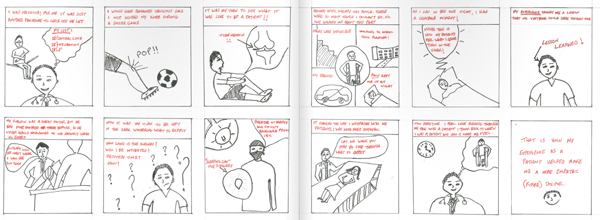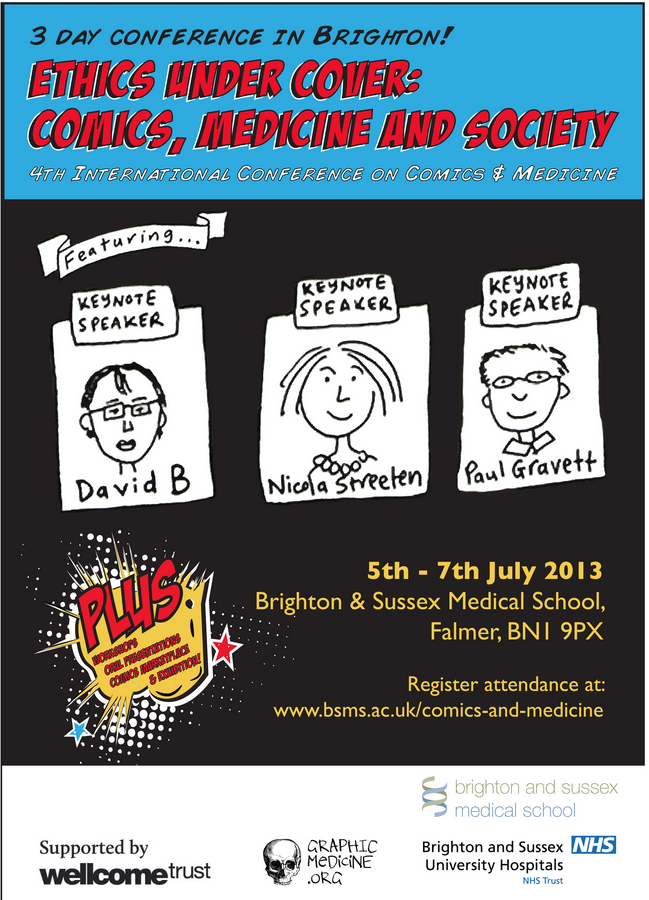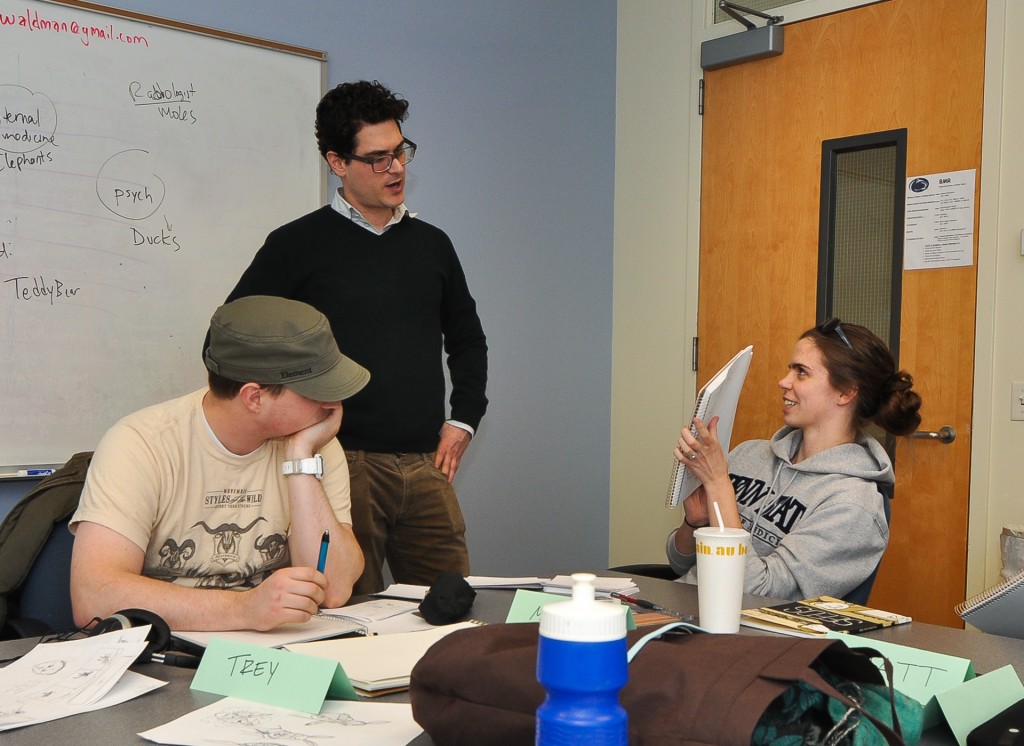Graphic Medicine: Comix Pathographies

For the last few years, each February I have made the journey to Middletown, PA. There’s no train station in Middletown, just a yellow painted wooden platform and an awning with a bench underneath. The train tracks run directly over an old overpass that stretches west towards Harrisburg. There’s usually snow on the ground when I arrive.
Dr. Michael Green, the svelte bespectacled professor who invites me each year to his class at Penn State College of Medicine, greets me along the train tracks as he normally does. Michael has had me guest teach his Graphic Storytelling & Medical Narratives course for the last few years. We met back in 2009, when I did some workshops at his local community center. Since then, Dr. Green has tasked me to help his students develop their analytic and empathic skills by making comix.
Readers familiar with my blog know that I like comix. I like to make comix and I like to to talk about them. From film adaptations to meta-fictional pop culture analysis I believe comix can tackle any subject and work in many domains. I’ve discussed how comix can be used in UX design and product development, I’ve used them as a pedagogic tool working with kids, and I’ve helped med-students figure out how to approach narratives in medicine.
Here’s the link to Dr. Green’s archive of the graphic pathographies made by doctors-in-training at Penn State College of Medicine. From personal accounts of babies born with cleft palates, to anxiety about tests or rotations, these narratives act as patient doctor resources as well as didactic exercises that point these students to bigger stories in health care.
Graphic medicine is concerned with the use of visual storytelling as a resource for patients and health practitioners. There are copious amounts of comix that address medical issues. From Pekar and Brabner’s, Our Cancer Year, to David B’s, Epileptic, comix have been helping people grapple with life and death and everything in between for some time.
Comix are being used to explain DNA and genetics, Obamacare, and how to pick up your life after surviving breast cancer. From psychoanalytical graphic therapy, to helping kids monitor diabetes with insulin, graphic medicine is a fully realized niche genre.
Testament to the growing acceptance and use of comix in the medical industry is the annual Graphic Medicine Conference this year being held in Brighton, England. Next years’ event is scheduled for Baltimore, so I hope to attend and maybe present something alongside Dr. Green. It’s not often that an illustrator/designer gets asked to review an article for a medical journal, but thanks to Dr. Green’s work, I can check that off the list!
Using comix to improve the diagnostic reasoning, observational, and empathic skills of doctors is pretty amazing. I am honored to share my obtuse insight with others who make a difference in the world and look forward to my return to Middletown. Hopefully, I wont miss the train ride home this year because I’m too busy chatting up Dr. Green and geeking out about our shared love of comix.

Header images is from Being a Patient Made Me a Better (Future) Doctor by: Jason Holmes
Photos courtesy of Dr. Michael J. Green

